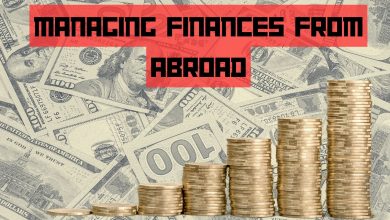Financial Security 101: Easy Tips for Building Your Emergency Fund

In the unpredictable rollercoaster of life, having a financial safety net is crucial for weathering unexpected storms. An emergency fund serves as a financial cushion, providing peace of mind and stability during challenging times. Whether it’s a sudden medical expense, car repair, or unexpected job loss, having funds set aside can be a game-changer. In this blog, we’ll explore some easy and practical tips to help you build and maintain a robust emergency fund.
- Set Realistic Goals:
Begin by setting achievable goals for your emergency fund. A good rule of thumb is to aim for three to six months’ worth of living expenses. Consider your monthly bills, rent or mortgage, groceries, and other essential costs. Break down the overall goal into smaller, more manageable milestones, making the process less overwhelming.
- Create a Budget:
Understanding where your money goes is essential for effective financial management. Create a detailed budget that outlines your income and expenses. Identify areas where you can cut back, redirecting those funds towards your emergency fund. Small sacrifices in discretionary spending can accumulate into significant savings over time.
- Automate Savings:
Make saving a seamless part of your routine by automating contributions to your emergency fund. Set up an automatic transfer from your checking account to your savings account each month. Treating your savings as a non-negotiable expense ensures consistent progress toward your goal.
- Cut Unnecessary Expenses:
Evaluate your spending habits and identify areas where you can cut back. Consider eliminating non-essential subscriptions, dining out less frequently, or finding more cost-effective alternatives for your regular expenses. Redirect the money saved into your emergency fund to accelerate its growth.
- Side Hustles and Additional Income:
Explore opportunities to supplement your income through side hustles or freelance work. Whether it’s freelancing in your area of expertise, driving for a rideshare service, or participating in the gig economy, the additional income can significantly boost your emergency fund without affecting your primary source of income.
- Windfalls and Bonuses:
Allocate unexpected windfalls, such as tax refunds, work bonuses, or monetary gifts, directly to your emergency fund. While it may be tempting to use this money for leisure or non-essential purchases, prioritizing your financial security will yield long-term benefits.
- Review and Adjust:
Regularly review and reassess your financial goals and the progress of your emergency fund. Life circumstances and financial situations change, so it’s essential to adjust your savings plan accordingly. Celebrate milestones along the way and stay motivated to reach your ultimate goal.
- Explore High-Interest Savings Accounts:
Maximize the growth of your emergency fund by exploring high-interest savings accounts or money market accounts. These financial instruments offer better returns compared to traditional savings accounts, helping your money work harder for you.
Conclusion:
Building and maintaining an emergency fund is a crucial step toward achieving financial security. By incorporating these easy tips into your financial routine, you’ll be better prepared to navigate unexpected challenges and setbacks. Remember, the key is consistency and discipline. Start small, stay committed, and watch your emergency fund grow, providing you with the financial resilience needed for a more secure future.




